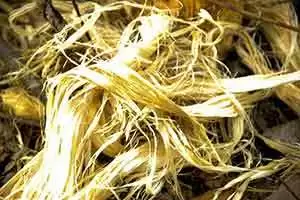
Celiac.com 12/17/2013 - One of the biggest hurdles for those who have celiac disease is finding a way to get enough fiber in their diets. Removing wheat from the equation also eliminates a huge amount of roughage. Wheat provides the fiber in many breads, pastas, crackers and other staples of the American diet. Replacing that fiber is crucial, since the added bulk moves the food through your digestive system and keeps you regular.
You should be aiming to consume between 25 and 35 grams of fiber per day. Here are a few ways to ensure you’re getting enough fiber in your diet, whether you’ve been living with celiac disease your entire life or just for a few weeks.
Celiac.com Sponsor (A12):
Bulk Up Your Food
There are plenty of fiber-rich foods that do not contain gluten. For example, fruits and vegetables are a great, all-natural source of fiber. You can add them to soups and sauces for a flavorful kick that will also provide a few extra grams of fiber. Skip the croutons on your salad — most contain gluten anyway — and sub in raisins for a sweet, filling treat.
Flaxseed and chia seeds are two superfoods that are naturally gluten free and contain a hefty dose of fiber. Stir them into smoothies, sprinkle on your breakfast cereal, or shake them over yogurt to give it a bit of a crunch. With several grams of fiber per serving, nuts are also a great addition to just about any main or side dish. Kidney beans or chickpeas can be stirred into soups to increase the fiber count.
Use Supplements
Adding a supplement to your diet can be an excellent way to make up for the fiber you’re losing by not eating wheat. You’ll want to find natural supplements that mimic the way fiber found in food breaks down in your gut. One smart option is a prebiotic, such as Prebiotin — a plant fiber that also provides good bacteria to the colon, further aiding in digestion.
Make Adjustments
It’s possible to increase the fiber content in your diet by making simple substitutions. Perhaps you have always eaten white rice, which is easier on your sensitive stomach than brown. Well, now’s the time to give fiber-rich brown rice another try. Since your celiac diagnosis has probably cleared up most of your GI issues, you should be able to eat brown rice now without issue. Or try fiber-laden quinoa, a rice substitute that’s rich in both fiber and protein, as well as millet or amaranth as a white rice fill-in.
Keep a Tally
Before your celiac diagnosis, you may not have paid any attention to your daily fiber intake. But now it’s essential to track it for at least a few weeks to make sure you’re getting enough fiber. Aim for 20 grams at first, until you get the hang of searching out non-wheat fiber sources. Eventually, you’ll want to get to 25 or more grams per day, and you may find it’s not as hard as you expected.








Recommended Comments
There are no comments to display.
Create an account or sign in to comment
You need to be a member in order to leave a comment
Create an account
Sign up for a new account in our community. It's easy!
Register a new accountSign in
Already have an account? Sign in here.
Sign In Now